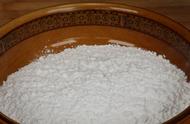英语单词的音节及读音规则
1. 音节概念在英语单词中元音特别响亮,一个发音的元音就可以构成一个音节,所以英语单词的音节是以发音的元音来确定的。只有一个发音的元音构成的单词称为单音节词,有两个发音的元音构成的单词称为双音节词,三个以上发音的元音构成的单词称为多音节词。
例:
双音节词:go, he, stand, think, please, take, some, what, glad, smoke, child, taught
双音节词:teacher, brother, Sunday, neighbor, darkness, breakfast, comment , open
多音节词:exercise, holiday, separate, celebrate, institute, opportunity
modernization
注:一个单词音节数的多少并不是按组成单词字母的多少来划分的。
2. 单词重音在英语的双音节以上的单词中,有一个或两个读得特别响亮的音节,我们称为重读音节,国际音标上
标有“′”这样的重读符号。一般说来一个单词只有一个重音。
例:Sunday [’sʌndi] begin [bi’ɡin]
3. 开音节开音节一共有两种:
一种叫绝对开音节,即直接以发音的元音字母结尾的单词。
例:go [ɡəʊ], he [hi:], no [nəʊ], we [wi:], who [hu:]
另一种叫做相对开音节,即发音的元音字母后有一个辅音字母(r 除外)再加一个不发音的字母e。
例:make [meik], note [nəʊt], these [ði:z], like [laik], use [ju:z]
4. 闭音节发音的元音字母后面有一个或几个辅音字母(r除外)时,这个元音字母构成的音节叫闭音节。如果单词重音在这个音节上,该闭音节就叫做重读闭音节。
例:bad [bæd], thank [θæŋk], desk [desk], sit [sit], stick [stik], fog [fɒɡ], shop [ʃɒp]; sun [sʌn], must [mʌst]
5. 元音字母在开音节中的一般发音A a [ei], Ee [i:], Ii [ai], Oo [əʊ], Uu [ju:]
例:take [teik], late [leit], he [hi:], theme [θi:m], time [taim], nice [nais], no [nəʊ]; joke [jəʊk], tune [tju:n], cute [kju:t];
6. 元音字母在重读闭音节中的一般发音A a [æ], Ee [e], Ii [i], Oo [ɒ], Uu [ʌ]
例:lamp [læmp], plan [plæn], well [wel], best [best], mill [mil], wish [wiʃ], hot [hɒt]; drop [drɒp], club [clʌb], but [bʌt]
7. 各元音在开音节和闭音节的读音规则1)A a
开音节中多读 [ei] 字母本身的音。 词例:name, plane, cake, take;
但have中却发 [æ]
重读闭音节中多读 [æ]。 词例:bad, lamp, tank, cat, map
a 的前面是辅音[w]时读作[ɒ]。 词例:want, wash, what, quality
a 的后面是 ss, st, sp, sk, th, f, n 时常读作[a:]。 词例:class, fast, grasp, ask, bath, staff, dance, command
2) E e
开音节中多读 [i:] 字母本身的音 词例:he, she, be, these
重读闭音节中多读 [e]。词例:pen, yes, well, desk, best
3) I i (y)
开音节中多读 [ai] 字母本身的音 词例:like, time, bike, why,
但give和 live中却发 [i]
重读闭音节中多读 [i]。词例:stick, ship, big, mill
词尾是-nd和 -ld时,i 可读作[ai] 词例:kind, find, child
4) O o
开音节中多读 [əʊ] 字母本身的音 词例:no, home, joke, smoke, joke
但to, do, who, move, shoe中却发 [u:]
重读闭音节中多读 [ɒ]。词例:hot, fog, shop, long, drop
词尾是-st和 -ld时,o 可读作[əʊ] 词例:most, post, bold, cold, 例外both, comb
o的后面是 m, n, v, th 时,可读作[ʌ] 词例:son, some, come, one, done, love, glove, mother, brother
5)U u
开音节中多读 [əʊ] 字母本身的音 词例:use, tune, cute, mule
u 在辅音字母l, r, j后面时读作[u:] 词例:blue, rule, true, June
重读闭音节中多读 [ʌ] 或[u]。词例:sun, but, club, must, full, put
但truth, busy中却发 [u:]
8. -r 音节-re音节的读音规则ar 常读作[a:] 词例:car, park, large, star; 但war, warm, ward却读[ɔ:]
er常读作[з:] 词例:verb, term, serve, stern;
ir常读作[з:] 词例:girl, first, shirt, bird
or常读作[ɔ:] 词例:horse, short, north, sport; 但word, work, world却读[з:]
ur常读作[з:] 词例:burn, nurse, hurt, fur
are常读作[eə] 词例:care, dare, stare, rare
ere常读作[iə]或[eə] 词例:mere, here, there, were; 但were 却读[з:]
ore常读作[ɔ:] 词例:more, wore, sore, store
ire常读作[aiə] 词例:fire, tire, hire, mire
ure常读作[juə]或[uə] 词例:pure, cure, manure, sure
9. 元音字母组合的读音规则1)a 其它字母
al 常读作[ɔ:] 词例:ball, walk, talk, walk, also,
其后有f 或m 时可读[a:] 例:half, calm, palm
au 和augh 常读作[ɔ:] 词例:cause, fault, launch; taught, daughter
例外:laugh [a:]
aw常读作[ɔ:] 词例:law, saw, claw, awful
ai 和ay常读作[ei] 词例:wait, main; day, play
air 和are常读作[eə] 词例:hair, pair, chair; fare, care, dare, stare, share
2)e 其它字母
ea常读作[i:] 或[e] 词例:meat, please, peace, clean; head, dead, lead, bread
例外:great, break读作 [ei]
ee常读作[i:] 词例:meet, three, steel, green, tree, street,need
ei和 ie常读作[i:] 词例:field, piece, ceiling, receive
有时ei 和ey一样。读作[ei] 词例:eight, neighbor; prey, grey
例外:friend, 读作[e] height读作[ai], review读作 [ju:]
ew常读作[ju:] 词例:new, few, dew.
ew在辅音字母l, r, j后面读作[u:] 词例:blew, crew, Jew
ear常读作[iə] 词例:hear, dear, tear;
有时读[eə] 词例:bear, wear, pear
后面有辅音字母时读作[з:] 词例:learn, pearl, early, earth
例外:heart, 读作[a:] year读作[jə]
eer常读作[iə] 词例:deer, cheer, beer, pioneer, engineer
3)o 其它字母
oa常读作[əʊ] 词例:coat, boat, soap, float
oi和oy常读作[ɔi] 词例:oil, voice, point; boy, joy
oul 常读作[ʊ] 词例:could, would, should
oo 常读作[u:] 词例:food, tooth, spoon, school, moon
例外:foot, good, stood, 读作[ʊ] ; blood, flood读作[ʌ]
oo 后面是k时读作[ʊ] 词例:book, look, cook, brook
oor和 oar 常读作[ɔ:] 词例:door, floor; board, coarse
例外:poor, 读作[uə]
ou 常读作[au]或 [ʌ] 词例:loud, house, mouth; young, touch, country, trouble
例外:group, 读作[u:], youth 读作[ju:], soul, 读作[əʊ]
ough 常读作[ɔ:] 词例:bouught, fought, thought
例外:though, 读作[əʊ], through 读作[u:]
our 常读作[ɔ:] 或 [auə] 词例:four, course, pour; our, hour, sour, flour
ow 常读作[au] 或 [əʊ] 词例:now, how, town, down; slow, show, grow, snow
owe 或ower 常读作[auə] 词例:towel, vowel; power, flower
4)i 其它字母
ig或igh常读作[ai] 词例:sign, design; sigh, light, night, bright, eight
ia, ie或io常读作[aiə] 词例:dialogue, reliable; quiet, science; violet, violence
5)u 其它字母
ui 常读作[ju:] 词例:suit, nuisance
ui的前面有辅音字母l, r, j 时,读作[u:] 词例:sluice, fruit, juice
例外:build读作[i]
注:以上都是元音字母、-r音节和元音字母组合在重读音节中的读音规则。在非重读音节中基本上所有都弱化成短元音[ə]。
10.辅音字母在单词中的读音规则1)B e 常读作[b] 或位于词尾不发音。词例:bed, book, bright; comb, lamb, tomb, climb
2)C c 常读作[k], [s] 词例:cold, clean cat; nice, city, decide
有时读作[ʃ] 词例:social, musician, precious
3)D d 常读作[d] 词例:day, desk, add,
动词加-ed 时 -ed 的读法
-ed前是清辅音时([t]除外),读作 [t]
词例:walked [-kt], jumped [-pt], missed [-st], washed [-ʃt]
-ed前是浊辅音时([d]除外),读作 [d]
词例:played [-eid], robbed [-bd], closed [-zd], begged [-ɡd]
-ed前是 [t] 和 [d] 时, 读作 [id]
词例:wanted [-tid], needed [-did]
4) F f常读作 [f] 词例:five, wife, four, leaf
有时读作[ʃ] 词例:social, musician, precious
个别情况读作[v] 词例:of [ɔv] 或 [əv]
5) G g常读作[ɡ] 词例:girl, game, give, big, ago
有时读作[dӡ] 尤其是在元音字母 e前时此时词尾的ge 读作[dӡ],词例:large, page, college, village
6) H h常读作[h] 词例:hot, house, head, hand
h 有时不发音。词例:hour, honor, exhibit, rhyme
7) J j常读作[dӡ] 词例:jam, joke, June, judge
8) K k常读作[k] 词例:cake, week, kite, sky
9) L l常读作[l] 词例:land, milk, belt, school
l 有时不发音。词例:walk [wɔk], calm [ka:m]
10) M m常读作[m] 词例:name, meet, mother, come
11) Nn常读作[n] 词例:line, nine, nice
n 在辅音音素[k] 和[ɡ] 之前读作[ŋ]。词例:bank, think, uncle, finger, language
12) P p常读作[p] 词例:pen, sleep, spring, picture
13)Q q该字母一般很少单独出现,它常和元音字母 u组成qu字母组合。常读作[kw] 词例:question, quite, queen
14)Rr常读作[r] 词例:road, right, read 其次是构成r音节或re 音节。
15) Ss在词首时常读作[s] 词例:sit, soap, sky
s 在两个元音字母间常读作[z] 词例:music, season, prison
s 在两个元音字母和不发音的e之间有两种读法
动词常读作[z] 词例:close, lose, raise
名词或形容词词常读作[s] 词例:base, case, close, coarse
s 前或后是清辅音时常读作[s] 词例:lamps, looks, waits; list, desk, husband
s 在辅音字母t之后常读作[ts] 词例:students, streets
s 在辅音字母d之后常读作[ds] 词例:beds, comrades, prides
注s 的读音规则较复杂,还得在具体的学习中去把握。
16) T t常读作[t] 词例:tell, meet, ten, letter
17) V v常读作[v] 词例:voice, love, vote, leave
18) W w常读作[w] 词例:wait, sweet, wall, twin. 有时不发音。词例:sword, answer
19) X x常读作[ks] 词例:box, exercise, text, excellent
x后面是元音,而且又是重读音节时,常读作[ɡz] 词例:exam, exist, exact
20) Y y出现在单词开头时常读作[j] 词例:yes, year, yellow
但出现在词尾时可能发[ai] 或[i]的音,词例:satisfy, beautify, country。与元音字母构成组合时可能发元音 [ei] 词例:day, play
21) Z z常读作[z] 词例:zoo, maze, doze, zone
11. 辅音字母组合的读音1)ch, tch 读作[tʃ]词例:child, chart, teach, match, catch, watch
ch 有时读作 [k] 词例:school, chemistry, character, stomach
2)ck 常读作[k]词例:neck, black, stick, pocket
3)cc 常读作[k]词例:accept, accident, success; according, accuse
4)ce 常读作[s]词例:nice, accept, rice, piece
5)dge 常读作[dӡ]词例:bridge, judge, lodge
6)gu, gue 常读作[ɡ]词例:guide, league, guess, dialogue
7)ng, 常读作[ŋ]词例:sing, strong, spring, long
8)gh, ph 常读作[f]词例:rough, phrase, cough, enough
但在igh, ough, augh 中gh 不发音,只发元音或元音组合的音。请参见前面 (9. 元音字母组合的读音规则)
9)qu, ph 常读作[kw]词例:quick, quality, quite, question
10)sh 常读作[ʃ]词例:she, fish, shirt, wash
11)ss 常读作[s]词例:miss, lesson, class, assist
12)th 有两种发音。
其一读作[θ] 词例:think, three, bath, method
其二读作[ð] 词例:this, with, weather , feather, mother
13)wh 常读作[w]词例:what, white, whip, where
14)kn 常读作[n]词例:knife, knee,
15)kn 常读作[n]词例:knife, knee,
16)tion, 有两种发音。
其一读作[ʃən] 词例:mention, conversation, modernization
其二读作[tʃən] 词例:question, suggestion
17)sion, 有两种发音。
其一读作[ʃən] 词例:mission, impression
其二读作[ӡən] 词例:decision, television
注:以上提供的仅仅是英语单词读音规则的一般规律,尽管英语单词的读音规则有规律可寻,但不是一劳永逸的事,同学们在掌握和熟悉一般规律的前提下还必须多读单词,并注意读准确。特殊读音得采取特殊记忆的方法。















